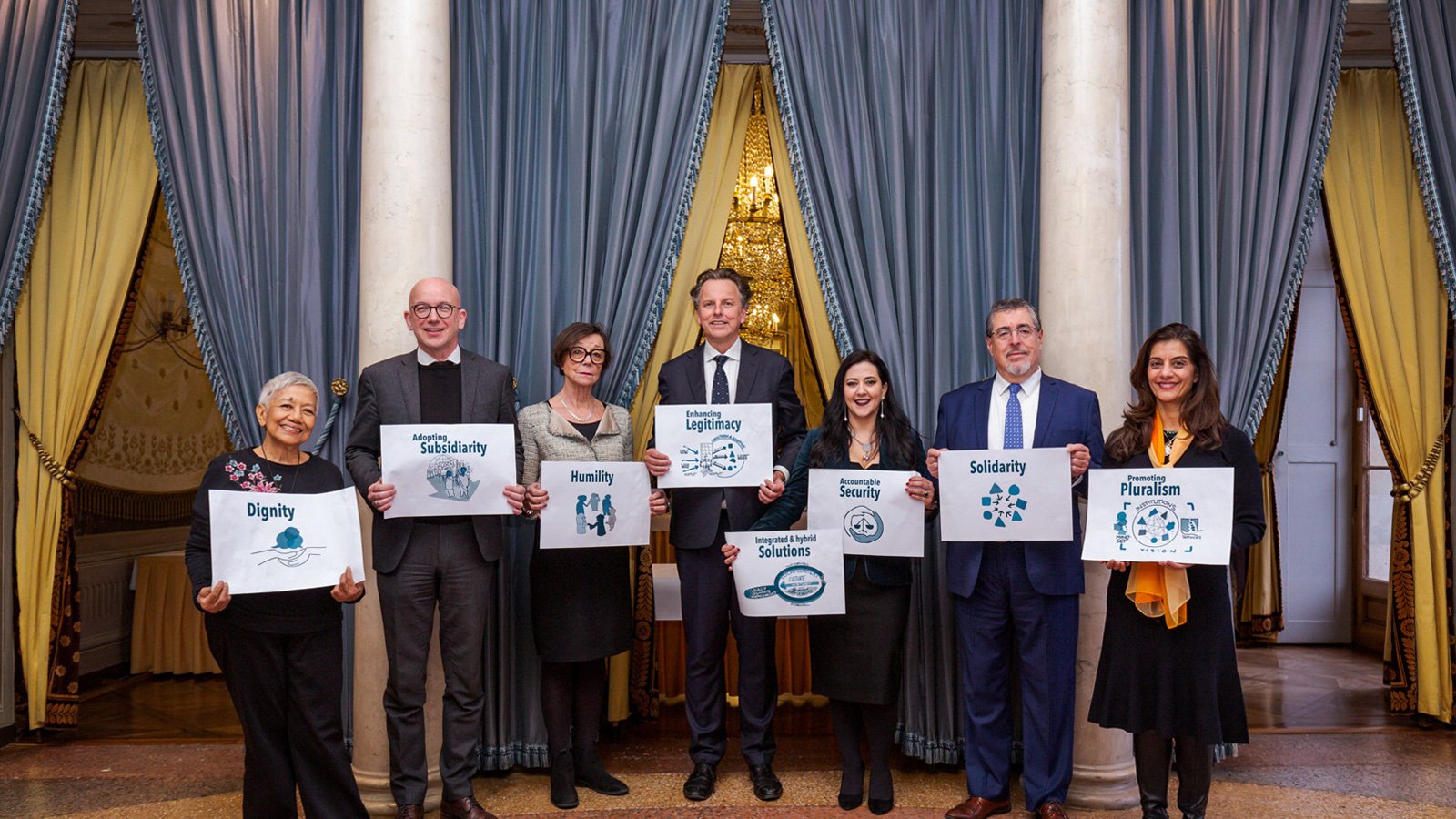Putting Principles into Practice: New Paths to Lasting Peace
The facts are sobering: Worldwide, more than 2 billion people are affected by conflict. Even when ceasefires and peace agreements have been settled, violence flares up again in almost have of the conflicts. With the support of the Robert Bosch Stiftung, the “Principles for Peace” initiative instead advocates for a set of guiding principles to chart a new path to lasting, inclusive peace.
After a two-year process, the final report of the International Commission on Inclusive Peace was presented in Geneva. It’s not a report to be filed away in a cabinet or gather dust on a shelf: The results of the Commission’s work should springboard a new alliance for peace. Aptly titled “The Peacemaking Covenant”, the report aims to serve as a framework for peacemaking and peacebuilding that allows different actors to join in by implementing the principles for lasting peace in their own work: International organizations such as the United Nations, governments, foundations, academia, business, and civil society as well as individual activists and mediators.
“The Principles for Peace initiative has really created momentum in the whole peacemaking field, bringing more than only a breath of fresh air into a debate that has too often been dominated by what doesn’t work.”
What needs to change in international peacebuilding
The development process itself was similarly broad: A stakeholder forum was held to involve 120 different organizations, while numerous academics lent their expertise to a research commission, and over 150 consultations were held across more than 60 countries with a total of several thousand individuals directly impacted by conflict. What emerged from this process was four vital shifts for international peacemaking and peacebuilding:
- How peacemaking is conceived: from a primary focus on diplomacy and negotiated settlements to end violence, to approaching peacemaking as a longer-term process that requires broader inclusivity, adaptability and sustained engagement to build legitimacy.
- How local and international stakeholders work together: embracing a partnership compact that supports the cocreation of locally-led solutions based on relationships of respect, reciprocity and humility.
- How peacemaking is implemented: working beyond elite pacts and power-sharing agreements to transform state-society relations through inclusive governance and political institutions that are accountable to society.
- How social groups interact: from “inclusion as representation” towards genuinely pluralistic political discourses, outcomes and social relations based on respect for diversity in political, social and economic life.
Now published, the principles are the roadmap to achieving these changes and charting new paths to peace and security. The challenge now is to bringing these principles to life, putting them to the test in real-world peacemaking. Accordingly, “From Principles to Practice” is the motto for the second phase of the initiative, with a new alliance of more than 40 partners established to chart the way forward.
Eight fundamental principles for peace form the Peacemaking Covenant. Dignity, solidarity and humility provide a moral and ethical compass for peacemaking efforts that fosters trust and builds respect among all parties.
Possible basis for a new UN resolution
“The Principles for Peace initiative has really created momentum in the whole peacemaking field, bringing more than only a breath of fresh air into a debate that has too often been dominated by what doesn’t work,” says Atje Drexler, Senior Vice President Global Issues. “If we can carry forward this momentum and sense of community from the first phase of the project, I am optimistic that the second phase will see the emergence of practical examples of implementing the principles and that these will find their way into the UN’s own political processes, perhaps even as the basis for a new resolution on how the UN proceeds with its peace work.”
Find out more
Website Principles for PeaceIn a world where conflicts are becoming more protracted, complicated and common, existing frameworks for peacemaking are no longer capable of delivering lasting, inclusive peace. A new approach has been developed with the Peacemaking Covenant.

